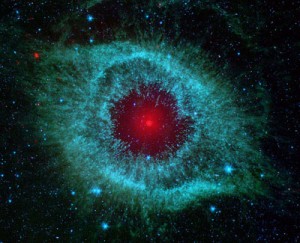The Spitzer telescope’s second life
It’s a big week for space telescopes

It's a big week for space telescopes. Hubble's getting an upgrade, Europe's Herschel (the largest mirror ever sent into space) and Planck observatories are on the pad awaiting a Thursday launch, and the six-year-old Spitzer space telescope is about to start its second life. Any day now (May 12 was the estimated date, but it could happen as late as June), Spitzer will run out of the liquid helium coolant that gives its infrared detectors their fantastic sensitivity. For some infrared telescopes, that spells the end. For Spitzer, it's just another phase.
Project scientists have long planned for what they call the "warm Spitzer" mission (man, there's a project crying out for a naming contest), in which those onboard instruments that still work at higher temperatures—a relative term, since we're talking about minus 404 degrees Fahrenheit—will be used mostly for long-term surveys.
One of the most intriguing of these will be a survey of at least 750 near-Earth objects, a significant sample of the 6100-plus NEOs discovered to date. Most are known only as moving dots of light against the stellar background. Spitzer will fill out the profile with data on each object's temperature, chemistry, mineral content, and reflectivity. We won't get pictures, but astronomers can deduce an asteroid's size and density from its temperature and brightness. And that will give us, for the first time, a distribution showing the relative abundance of large and small asteroids in Earth's neighborhood. It should also help scientists tell the dead comets from the ordinary asteroids.
Not bad for a telescope whose main mission has ended.